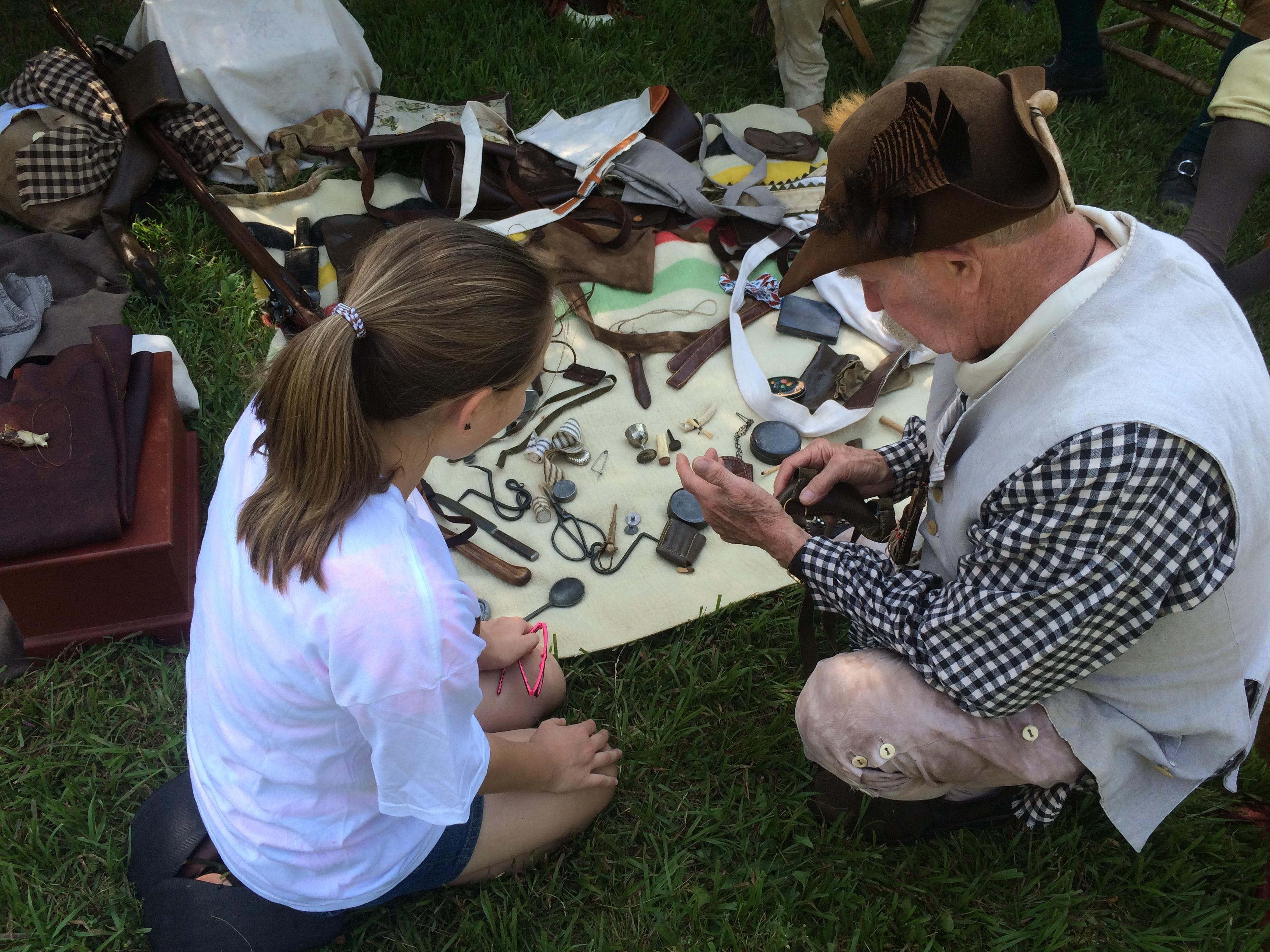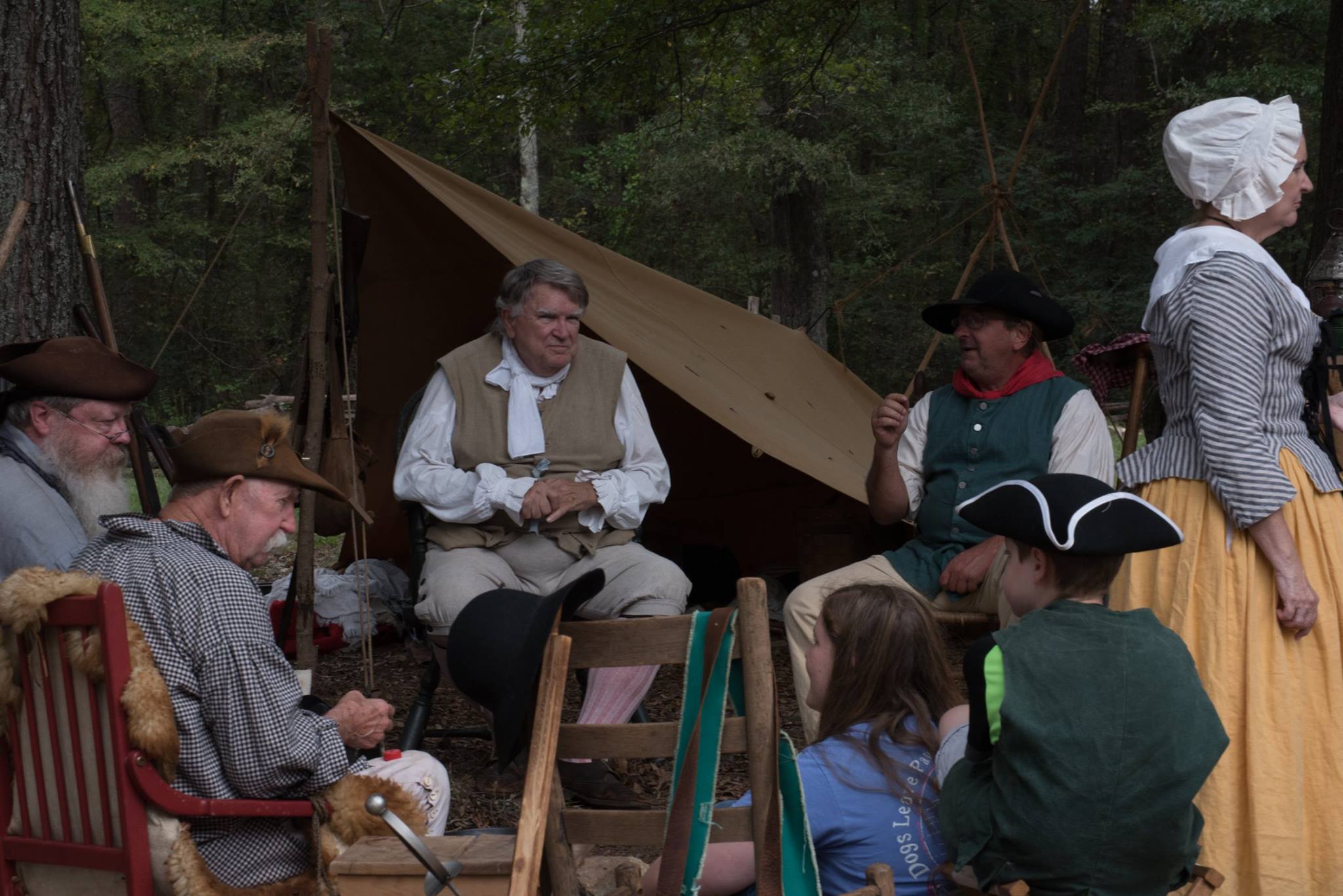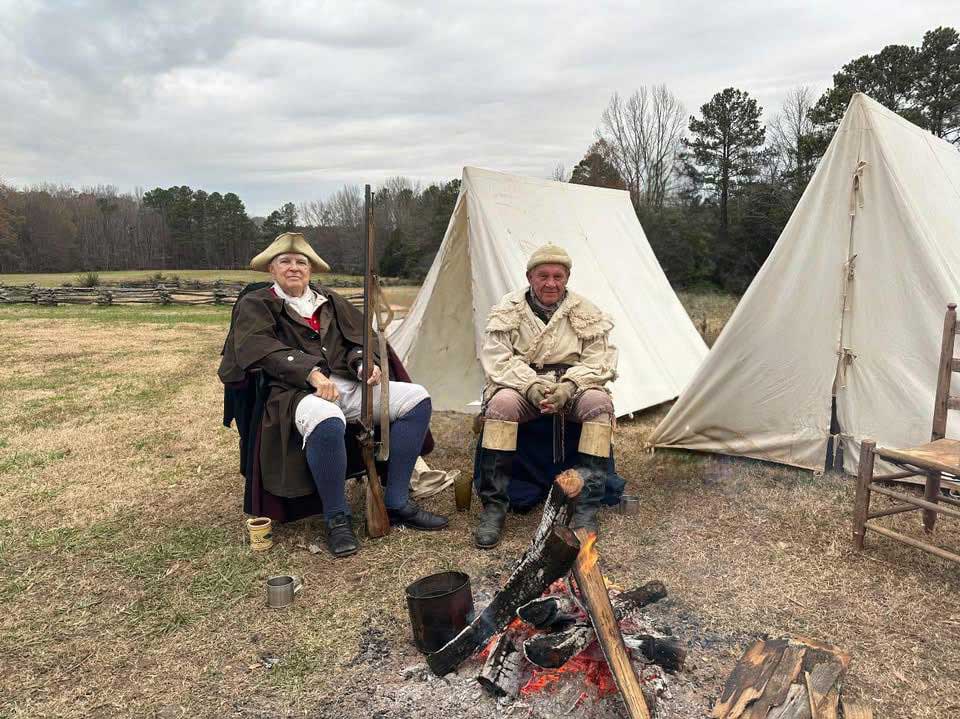About the New Acquisition Militia
The American Revolution was on the edge of collapsing following the surrender of Charles Town to British forces in May 1780. With the stroke of a pen, General Benjamin Lincoln, Commander of the Southern Continental Army, surrendered over 5,500 men to British forces.
Though many believed the war would soon be over, local armed militias with “Whig” (pro-independence) sympathies rose up throughout Georgia and Carolinas to rally the resistance against the British and their Tory sympathizers.
Resistance in the South Carolina Upcountry, characterized as “the Presbyterian Rebellion”, was a series of minor skirmishes and battles that took place from the late spring to the summer of 1780. Many, but not all of those engagements were concentrated in the extreme northern portion of the Camden District (present day Chester County) and the New Acquisition District (present day York County in SC). Scots-Irish Presbyterians dominated the population in those areas and the Scots-Irish and British possessed mutual disdain for each other. Many, but not all of the Scots-Irish living in those areas were eager to join the resistance movement when British forces threatened their lives and property.
The Whig militia forces in South Carolina, led by Brigadier General Thomas Sumter, General Francis Marion, General Andrew Pickens, and other able commanders, frustrated British attempts to consolidate their hold in the Carolinas. Their actions bought time for Washington and the Continental Congress to raise Continental forces to counter British forces. Though their first attempt to offer resistance under General Horatio “Granny” Gates was met with disaster at the Battle of Camden (August 6, 1780), their second attempt under the able-minded leadership of General Nathanael Greene (the “Fighting Quaker”) led to a successful campaign that resulted in the gradually decimation of Cornwallis’ Army through various means, ultimately leading to the Siege at Yorktown.
Take a step back into the past, relax and come hang out with us.

The New Acquisition Militia’s educational programs focus on this important part of the story of the American Revolution by providing context for the general public and school children engaged in learning about American history. We are a family friendly organization focused on education and encourage others to join as members to help with these programs. Also, we invite you to read the articles focused on the history of the American Revolution included in the sidebar.
See our schedule for areas in which we serve and please consider joining the NAM!


Research Blog
SETTLERS WHO TRAVELED THE WAGON ROAD FROM PENNSYLVANIA TO THE SOUTH 1765-1775
By John T. Misskelley THE ESTABLISHED SETTLER There were two types of settlers who traveled the great Philadelphia Wagon road. The first were the established families, who had been able to pay the passage from the north of Ireland to Philadelphia . The Londonderry...
EARLY USAGE OF THE TERM “SCOTCH-IRISH,” 1500-1800
Michael C. Scoggins, York County Historical Center April 14, 1573: “We are given to understand that a nobleman named ‘Sorley Boy’ (Macdonnell) and others, who be of the Scotch-Irish race, and some of the wild Irish, at this time are content to acknowledge our true and...
THE SCOTCH-IRISH ON THE AMERICAN FRONTIER
Michael C. Scoggins, York County Culture and Heritage Commission, 2003 Origins of the Scotch-Irish Within a century of the Norman conquest of England, adventurous Norman knights began carving out small kingdoms in the ancient Celtic island of Ireland. It was not long...
SAMUEL WATSON COLONEL, NEW ACQUISITION MILITIA
Copied from: http://freepages.genealogy.rootsweb.com/~hookersbend/bio_colonel_samuel_watson.htm It is believed that Samuel Watson was the eldest son of William and Sarah ?? Watson, of Hanover Township. Lancaster County Pennsylvania. William’s will reflects a total of...
Blacksmithing at Brattonsville Ca. 1780
Blacksmithing is the art and mystery of working with the black metal – iron. At ambient temperature iron is very hard. To make it plastic we heat it to almost melting so we can shape it to our needs. We use a forge to accomplish this. Forge: The forge is a pile of...
THE EARLY HISTORY OF THE BRATTON FAMILY
by Michael C. Scoggins Research Historian York County Historical Center York County Culture and Heritage Commission February 2002 © 2002 by York County Culture and Heritage Commission All Rights Reserved INTRODUCTION: THE LIVES OF WILLIAM AND MARTHA BRATTON William...
